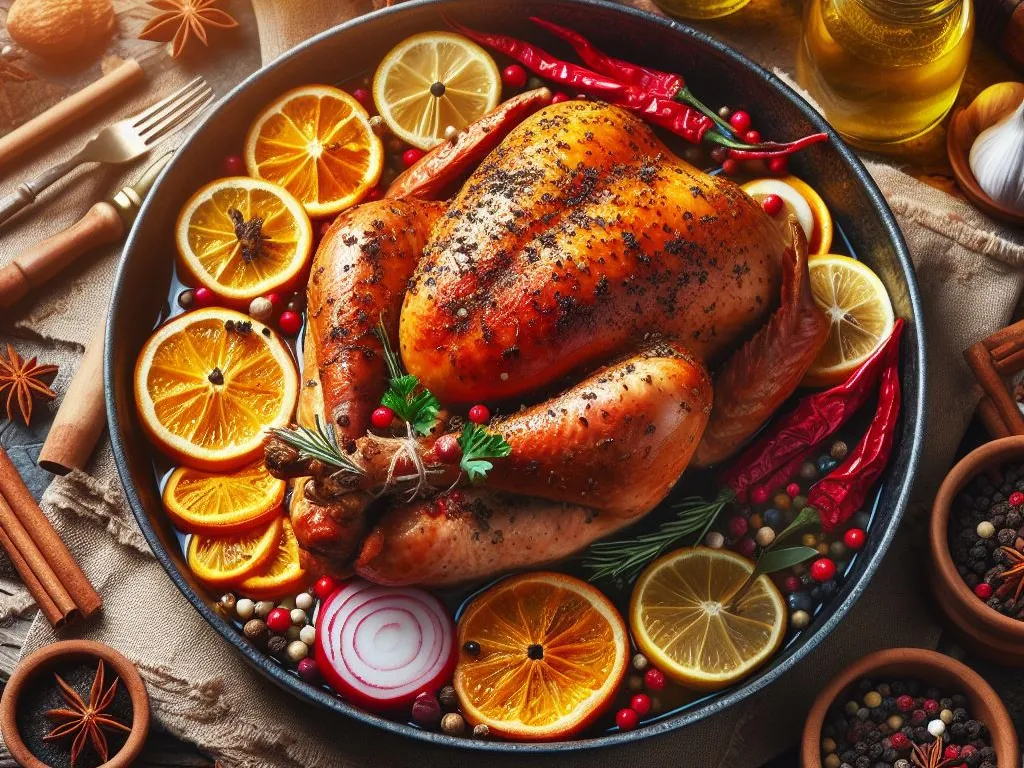Is brine the key for turkey to shine? Check out what’s better than turkey’s brine to make flavors pop with pride!

Brining poses two significant challenges. Firstly, handling it can be quite burdensome. The process demands a vessel large enough to immerse an entire turkey, often requiring unconventional containers like a cooler, a sizable bucket, or a makeshift arrangement of heavy-duty garbage bags—all to ensure the turkey and brine stay consistently cold.

This refrigeration task can last for days, monopolizing the fridge during peak usage periods or demanding a continuous supply of ice packs to maintain the required low temperature.
Additionally, the flavor of the bird is compromised through brining.
The turkey absorbs water during the process and retains it. However, that touted 30 to 40% moisture retention doesn’t consist of succulent turkey juices but rather plain water. Those who have savored brined birds often complain about their juiciness being marred by watery liquid.
To come around the blandness of brined turkey, a popular method is using broth to brine meat. The problem is that, despite its appearance as a clear liquid, broth is water infused with a multitude of dissolved solids that contribute significantly to its flavor profile. Most of these flavorful components consist of comparatively large organic compounds on a molecular scale, while salt molecules are relatively small.
Consequently, while salt easily traverses the semipermeable membranes within animal tissue cells, larger molecules face hindrances in doing so contributing nothing to the overall flavor profile of the roast meat.
Dry brining to the rescue!
When we apply salt to a turkey (or chicken) breast, osmosis initiates the extraction of meat juices. As salt dissolves in these juices, it forms a highly concentrated brine, aiding in the breakdown of muscle proteins. This breakdown allows the juices to be reabsorbed, this time carrying the salt back into the meat.
Gradually, through the process of osmosis, dissolution, and reabsorption, the salt permeates the meat.
How to dry brine

Use about 3 teaspoons / 15g Salt for every 1lb / 0.5kg of meat. Sprinkle the salt mixture generously over all meat surfaces. Hold it six to 10 inches above the bird and let it scatter evenly across the turkey’s surface for thorough coverage. Ensure the turkey is well coated with salt but not entirely encrusted.
Place the turkey on a rack set within a rimmed baking sheet and refrigerate it, uncovered, for 12 to 24 hours. Proceed to roast without rinsing, excluding any additional salting steps mentioned in those recipes.
Dry-brining beyond 24 hours results in even juicier and more flavorful meat. If brining for over 24 hours, loosely cover the turkey with plastic wrap or cheesecloth before refrigerating to prevent excessive moisture loss through evaporation.
Allow it to rest for up to three days.
For more detail check out: How to Make Brine – Brine Recipes
What about Aromatics in Brining?
Numerous brining recipes suggest boiling various aromatics—carrots, celery, onions, spices, herbs, and so forth—in the brine before allowing it to cool. Although this practice enhances the aroma of the brine, its impact on the flavor of the turkey or chicken remains largely confined to the skin. As mentioned before, the issue lies in the abundance of salt in the brine, as salt, owing to both its size and magnetic charge, tends to penetrate the cells of the turkey more readily. Consequently, most of these larger, flavorful compounds fail to permeate the meat.
Considering the time and effort invested in creating a flavored brine, heating it, and allowing it to cool, opting for a flavorful rub or herb butter is a much wiser choice. This alternative ensures a comparable—if not greater—infusion of flavor into the bird, requires fewer ingredients, and ultimately saves valuable time in the process.
Summary
- Dry brining turkey is easier and results more flavorful meat.
- Aromatics in brine don’t penetrate meat hence don’t contribute to the end flavor.